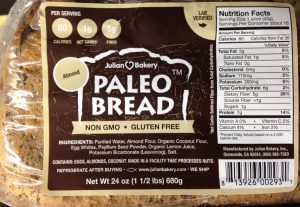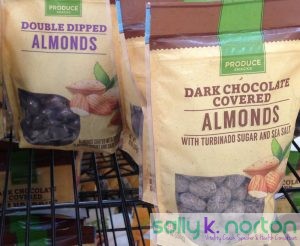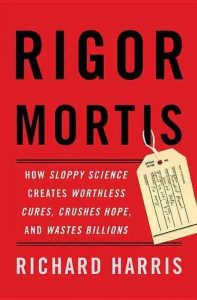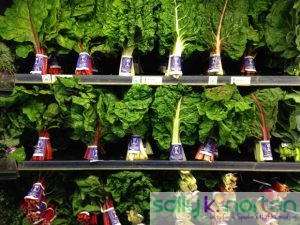In January I spoke at a wonderful nutrition and health conference, the Keto Getaway Conference, in West Palm Beach held by LowCarbUSA. Even though I was sick and the weather in Florida was cold, I had a wonderful time. Way to go Pam and Doug Reynolds, the founders and organizers who pulled together a wonderful program and a terrific line-up of speakers for the 2018 Keto Getaway!
Including a presentation on dietary oxalate in a low-carb nutrition event… this was a first! I am so grateful to have had the opportunity to introduce oxalates to some of the leaders in the keto nutrition movement. The credit goes to Carole Freeman (a.k.a. Keto Carole) who recommended me to Doug Reynolds. Thanks to her I shared and gained a number of important insights about the relationship between low-oxalate eating and a keto diet, some of which I have summarized below.
For those of you who are new to ketogenic diets, the first part of this post explores the whats, whys, and hows of “ketogenic” eating. If you’re already familiar with keto, you might want skip ahead to My Insights from Hanging in the Keto World.
What is Keto?
Keto is the popular term for eating a diet that is nearly free of carbohydrates, creating a fat-burning body “economy”. The term “keto” comes from the molecules (referred to “ketone bodies”) that your body generates when it burns fat instead of glucose to fuel activity and metabolic functions. Even the brain can switch to burning ketones when carbs are cut from the diet, which is a good thing. Doctors will sometimes worry about the body creating ketones, because they don’t understand the difference between nutritional ketosis (a normal healthy process that occurs when your body burns fat) and ketoacidosis (which also creates ketones, but which occurs when your metabolism is not working due to diabetes or other metabolic disorders).
Long having held the ecological niche of game hunters, human beings have been eating low-carb for many tens of thousands of years. Today’s carb-centric diet is a recent invention; the idea that processed carbs (eaten in abundance) are safe just came into being about 40 years ago. This is about the same time the 24-hour grocery store was invented. Not long after that, cup holders in our cars became standard equipment by the 1980s as well. By then we were hooked on sugar-on-the-go.
Why Keto?
A low-to-no carb diet is not new but is being explored anew by people seeking to:
- cure obesity,
- reverse diabetes,
- treat brain and neurological disorders (Epilepsy, Parkinson’s, Alzheimer’s Disease, brain injury, mood problems and more),
- manage endocrine disorders (Polycystic Ovary Syndrome),
- support cancer treatment; and to
- improve general health, well-being, and longevity.
Also, fasting has become a big buzz of late. Training your body to be good at burning fat and ketones is the best preparation for fasting. For my own health, I have been a carb-restricting eater for at least eight years, with the last year going lower and lower and relying on my fat-burning capacity more consistently over the last 6 months so I can experiment with fasting (and still stay energetic and fully-functioning).
How Keto?
To “go keto,” people remove sugars and starchy foods from the diet: grains, fruits, potatoes, junk foods, juice, sweet drinks, etc. The only effective way to lower carb intake is to eat something else, specifically fats (not excessive protein). Basically, if you want to burn fat for fuel, you need to eat fat. Simple logic, right?
The best example of this type of diet is The Atkins induction diet. Typically, a low-carb, high-fat (LCHF) diet involves a reduction in the amount of plant foods (no grains, beans, or potatoes), more animal foods (eggs, meats, fish) and many more fat calories from both animal (full-fat meats, bacon, chicken skin, bone marrow, lard, tallow, butter, heavy cream, cheese) and vegetable sources (coconut, avocados, nuts).
Is it Safe?
A ketogenic diet means eating more butter, olive oil, heavy cream, coconut, avocados, and fatty meats. This is a shock to most people because we have been wrongly told over-and-over again for four decades that eating fat is bad for our health. It turns out that the only real problems with fats come from:
- trans-fats (hydrogenated vegetable oils),
- processed vegetable oils (e.g. canola, soy, corn),
- poor-quality fats in the context of a sugary, high carb diet, and
- the contamination of fats with environmental chemicals and, perhaps, with certain naturally-occurring plant sterols (as in soy oil).
Clean animal fats like lard, egg yolks, beef tallow, cream, and butter are beneficial to health because they contain needed nutrients, help the body assimilate nutrients, help act as a solvent, moisturizer, and clean-burning energy source in the body. Coconut oil, and fats from avocado are also safe and beneficial in the context of a low-junk, low-sugar diet. Despite the many unknowns still surrounding very low-carb, high fat diets (see the next section), lowering carbohydrate intake is safe for most people because a healthy body has no intrinsic need for them. (Some conditions, including heart failure, kidney stones, and gout may need special attention from a keto-aware medical professional who can monitor liver, kidney, and heart function to ensure safety.)
The State of the Art of Ketogenic Living
The science and even the definition of ketosis is still emerging. That is, although there are many scientific papers on the subject, many basic questions are just starting to be explored. For example: what is the most accurate way to measure ketone bodies so that we can monitor the state of ketosis? (Is it by the breath, urine, or blood?) How does a fat-burning metabolism affect our need for micro-nutrients? How do we correctly interpret diagnostic testing that has been standardized based on the modern grain-based, high-carbohydrate diet, when these tests are performed during prolonged ketosis? We may need more salt and electrolytes on a keto diet, but how much and when?
I have my own question too: Is the reduction of plant foods (such as wheat, beans, and potatoes) part of the reason that people on a keto diet feel better and love this way of eating? The keto diet is dramatically different from the standard diet, and there are many moving parts that are very much unaccounted for! (Especially the effects of reducing our intake of plant toxins.)
Does a Keto Diet Work?
Yes—if you do it right and give it enough time! That is, to feel your best while burning fat, your cells need to change the equipment they use for energy production. That takes time. There is a transition period of several months or a year, or even longer for some people. This transition can be a bit of an ordeal or it can be straight-forward: everyone is different.
There are several factors that can make the transition period challenging or even unpleasant. For example, you have to face the addictive nature of carbohydrates–they stimulate insulin and brain chemicals that make us crave sugar, bread, pasta, pizza, fries, chips, potatoes, donuts, desserts, chocolate, etc. Carb withdrawal is ugly. The addictive pull of carbs sets us up to abandon our body’s keto-metabolism training due to “cheats”. When we cheat and eat carbs, the progression to keto is up and down—prolonged and delayed by the internal food fight, personal habits, and the cultural challenges that are waiting around every corner in a carb-centric world. Patience, persistence, and starting again and again eventually pay off for some, but many people give up and prematurely declare themselves “not-a-fit” for this approach.
Key Tips on the Keto Journey
From my experience in being strict about carbs, there a few critically important keys to success:
- Eat more salt, a lot more, because your kidneys will “waste” salt and potassium when you switch to low carb. If you keep switching on and off ketosis (like I did for years), you may end up depleted of salt and potassium and electrolytes generally. This can mean dry connective tissues and induce muscle aches and knots.
- Get enough food: “strict low-carb” is not “low-calorie”.
- Embrace fats: eat much, much more ghee, butter, and other animal fats than you think you should.
- Let it take the time it takes (measure in months, not days). You will be reworking daily habits, holidays, ways to celebrate, etc. This involves the psychologly, sociology, and the physiology of eating!
- While slowly progressing toward maintaining a consistent keto lifestyle, live and love your life as it is without fretting about the “depth” of your ketosis.
My Insights from Hanging in the Keto World
High-carb foods come from plants, and many (namely: grains, potatoes, beans) are high oxalate. Switching to ketogenic eating means cutting out grains, potatoes, and beans—completely! Unless you are frequently eating spinach, swiss chard, mixed salad greens, nuts, and chocolate, you will often be eating less oxalate on a keto diet. Some keto dieters even move to an all-meat, or mostly animal foods diet. This is exemplified by Amber O’Hearn (find her here and here) and many other 100% carnivorous eaters (think of this as the “feline diet”). What keto dieters may not realize is that this all-animal diet is also one way to do a zero oxalate diet.
One of the medical leaders in the field of therapeutic ketogenic diets is Dr. Eric Westman of Durham NC. He and other keto-promoters like to mention (okay: brag) that not only can they correct (cure) diabetes and obesity with diet, but that their patients also report less pain and digestive problems. He says that 80% of his patients with reflux get relief on the keto diet. He’s crediting ketosis for these bonus outcomes, without considering the effect of reducing plant toxins. However, pain and digestive problems regularly clear up on a low oxalate diet—even without ketosis.
Could it be that cutting out wheat, potatoes, and beans while eating more meat is a path to a moderate oxalate diet? Surely, reducing or removing oxalates and other plant toxins from the diet adds to the benefits of the low-carb, high-fat, ketogenic diet. Still, the keto world is mostly invested in the idea that ketones in the body are the principal source of the “keto magic”. Ketones are only one of the many reasons that people feel better on a keto diet. (Subtracting plant toxins feel good!)
Eat Less Plants
Who is looking at the changes in exposure to plant toxins? Sadly, not many researchers are exploring this angle in nutrition. But some keto proponents do suggest that a “low plant, high animal food diet” results in better health than a keto diet that includes more plants. Psychiatrist Georgia Ede does a great job explaining this seemingly radical idea.
Here is quote from Dr. Ede:
“There’s no evidence that I could find proving that plant foods are good for us. You see many, many studies showing that plant extracts can be used as medication when someone has a disease, are using [a subset of] their naturally toxic properties to your advantage. But if you are a healthy person, do you need to eat plants? As far as I can tell, you don’t…. When it comes to anti-nutrients, these natural chemicals within plants not only can irritate our systems, but they can interfere with our ability to digest and absorb nutrients, key nutrients …. The part of the plant which is most risky for us… is the seed. Because that’s the most heavily protected, that’s the future of the plant. …grains, beans, nuts and seeds are all seeds and they are very heavily protected. And I think that that is why… many people feel better on that [keto] diet, because they’ve removed legumes, they’ve removed grains… They have [often] not removed nuts and seeds, although I think some people who don’t feel better enough on a [low-carb] diet might want to consider that .”
Other Hints that Keto Sometimes Works Like a Low-Oxalate Diet
- The “keto rash” sounds just the low-oxalate rash (see the picture nearby)!
- Reports of “keto gout” sound a lot like oxalate flooding (dumping) reactions that may happen on the first year or two of a low-oxalate diet.
Why Oxalate Awareness is Needed in the Keto World
Oxalate is one more factor that makes ketogenic eating a good idea, SOMETIMES. There are at least 2 ways oxalate could be a problem in a keto diet:
1. Too Much Oxalate.
Some keto dieters may overdo oxalate by making these mistakes:
- relying too heavily on nuts;
- routinely eating some of the classic super-high-oxalate greens (spinach, swiss chard, beet greens, micro green salad mixes);
- spicing up their foods with high oxalate spices like cinnamon, cumin, turmeric, etc.; or
- treating themselves to keto “fat bombs” and hot drinks made with coco and dark chocolate.
Any combination of these low-carb/high-oxalate ingredients can quickly add up to a dangerously high oxalate diet.
2. Too Few Oxalates, Too Fast.
The mostly-animal food version of keto may mean abruptly (and unawarely) switching to a much lower (near zero) oxalate intake. In some people with a history of eating high oxalate foods: Oops! They may experience an abrupt outbreak of a whole new set of problems. Why? Because this switch is likely to destabilize oxalate deposits in the body and trigger oxalate flooding / dumping. Boy can that be unpleasant! Flooding your tissues with ionic or nano-oxalate is hard on your body. The deleterious consequence of the body’s desire to be rid of oxalate can be softened with certain supplements and other strategies that are just beginning to be explored (and that need to be figured out for each individual).
Lets Get Together
In my own experience, Low-Oxalate and Low-Carb are a wonderful combination for enhancing mood and energy, and for managing pain. Both are important for optimal brain development and function, limiting the effects of brain aging, and for preventing and perhaps treating dementia. There is a potentially powerful symmetry in the union of know-how in the previously unconnected worlds of low-carb and low-oxalate. Lets keep thinking together about what we need to learn and teach to bring the greatest possible benefits to human health.
To view videos of 2018 Geto GetAway speakers go here. (https://www.lowcarbusa.org/videos/video-members-area/2018-wpb-premium-videos/)

























